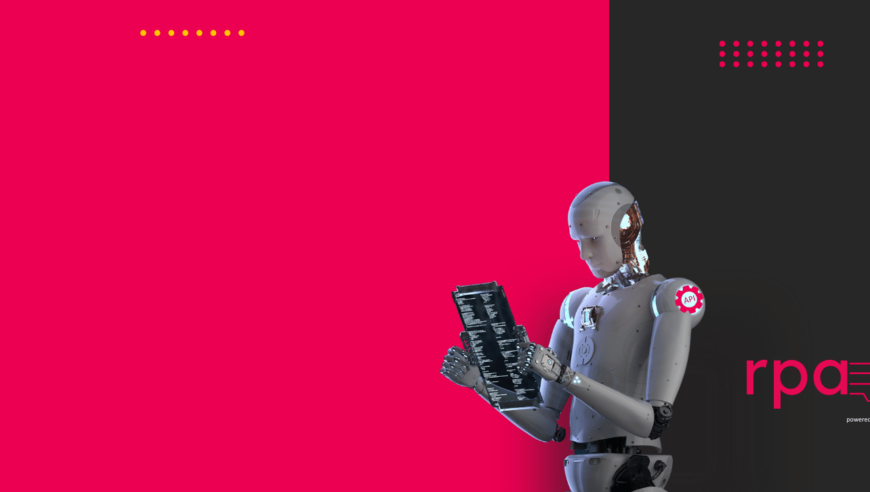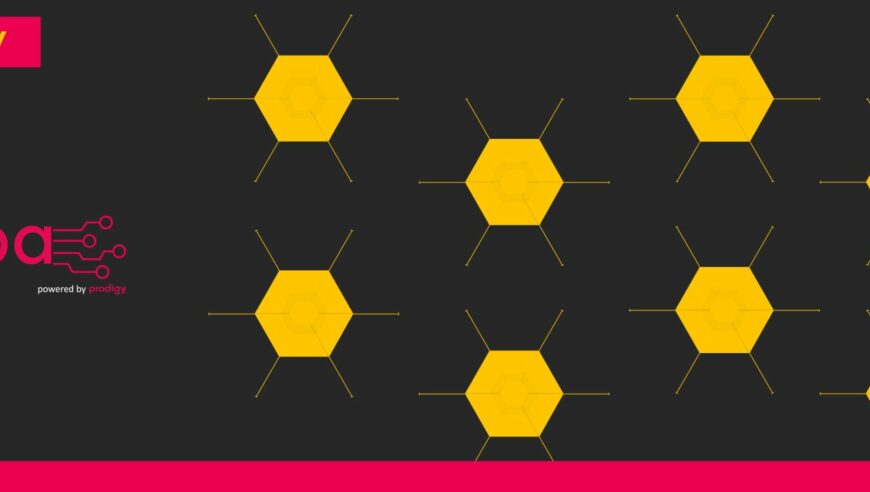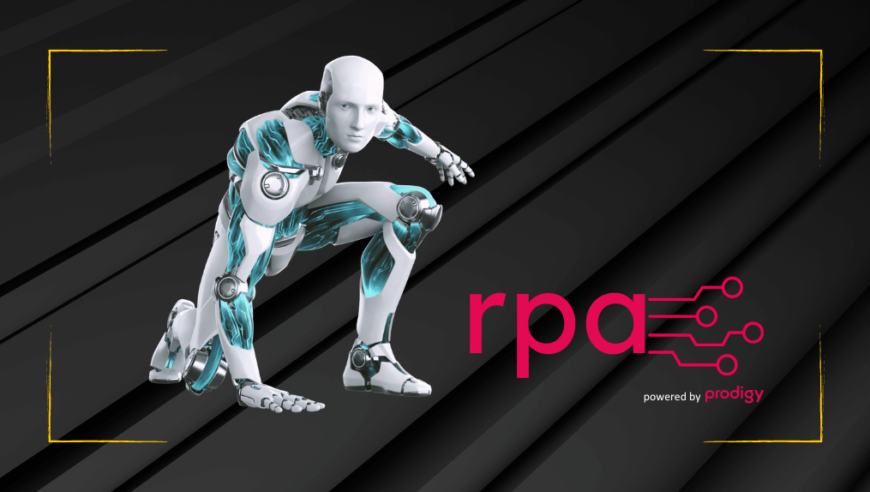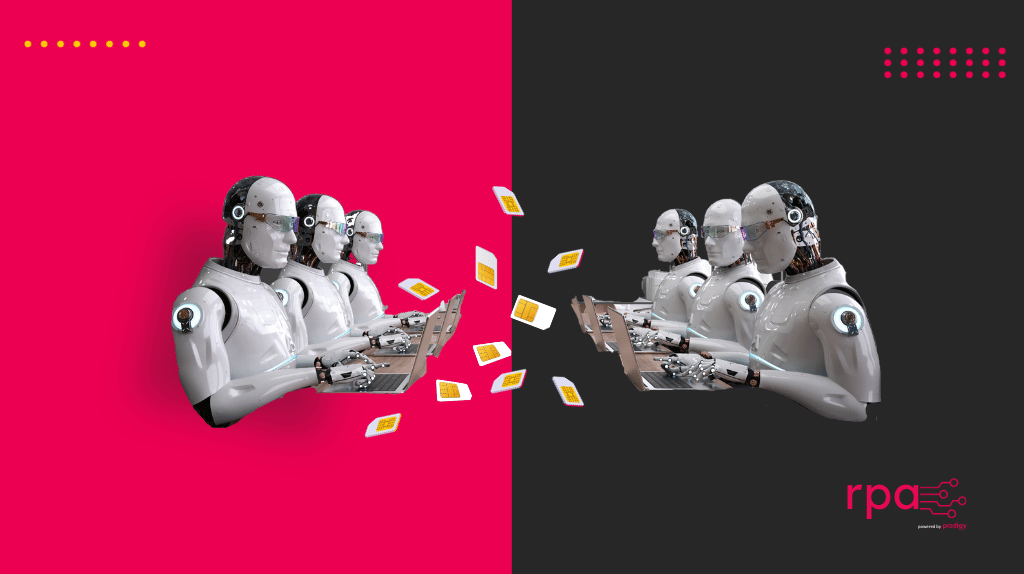
Discover the World of Robots
Welcome to our Robots series! We’re exploring these smart machines and how they’re shaking things up in different industries. In this second installation, we’re talking about Unattended Robots — the clever ones that handle tricky tasks without needing someone to watch them all the time. Check out part 1 here – No API? No problem!
Today, we’re looking at SIM swaps. See how these robots deal with complex tasks in business, making things smarter, more efficient, and cost-effective.
Unattended Robots are changing how business works, making operations smoother and more efficient. They do their job without needing constant human supervision, making a big difference in how companies handle challenges. From managing IoT SIM cards to the details of SIM swaps, we’re exploring how robots bring solutions that are scalable and cost-effective. Welcome to the world of business transformation with robots!
Defining unattended robots
An unattended robot is an advanced software or a system crafted to independently carry out specific tasks without constant human monitoring.
In customer operations, which involve both the front and back office ecosystems, the latter tends to be quite time-consuming. Here, unattended robots act as intelligent computer programs, operating discreetly in the background. They efficiently manage repetitive tasks without continuous human supervision, ensuring seamless operations, precision, and easy adaptability. This enables organizations to allocate resources judiciously and concentrate on more meaningful work.
Handling Enterprise requests
The back office is tasked with handling enterprise requests. Dealing with, for instance, a thousand requests from a company can be time-consuming. However, the execution of this action doesn’t necessitate high-level intelligence.
For example, if you lose your SIM card, the procedure entails transitioning to a new one. This necessitates a system action to switch from the old SIM card to the replacement. On the other hand, if you’re a new employee without a company SIM card, you might initiate a request to obtain one from your employer.
Navigating IoT Challenges
In large enterprises like Bank Centres, there is a continuous need for hundreds of SIM cards due to regular hiring globally or in specific locations. With new joiners daily, managing these SIM cards, including tasks like canceling, reallocating, or stopping them, becomes essential. Traditionally, updating these records might require dedicating one resource per week to the task.
IoT SIM cards at an energy company
The IoT SIM card is different because it is located in a sensor such as a smart meter issued by an electricity company. These might be required for each building in a city, or utility meters, at least one per apartment or house…that’s a huge amount of SIM cards.
Operations of various actions will need to be managed daily – perhaps a meter has failures or you need to change the SIM clusters. Although you need to change those, you don’t change all of them at the same time, but you are installing or uninstalling as per each request, or batch. You might request 1000 physical cards for installation, which you plan to deploy for the same amount of meters now or in a couple of months. This is a front-office task.
In the beginning, you’ll employ physical cards for installation. After that comes maintenance. For instance, if there’s a need to change the SIM card or if the meter encounters a fault such as burning out.
Scaling Challenges in SIM Card Management
If you consider 100,000 people or devices, then even a small percentage of SIM card problems can become quite a significant time and cost burden. This poses administration challenges for businesses as they spend considerable time initializing, updating records, and creating new cards, involving numerous system steps and actions such as:
1. Setting up a new customer.
2. Making a new card.
3. Generate an assignment.
4. Handling updates or replacements.
5. Managing reassignments.
Each of these actions functions independently within distinct systems, contingent upon the enterprise’s back office and ERP systems.
Navigating SIM Swaps: Processes, Reasons, and Variations
A SIM swap changes the connection from one SIM card to another, and the processes will vary from one provider or operator to another.
The SIM Swap takes place within the system only. So, it’s not a physical change. Agents might need to assign a unique serial number to a particular account during this process. This is specific to SIM-related activities. Other steps, like delivering the physical card to their addresses and determining delivery dates, are separate and independent processes. The SIM swap is a step in the middle of these actions.
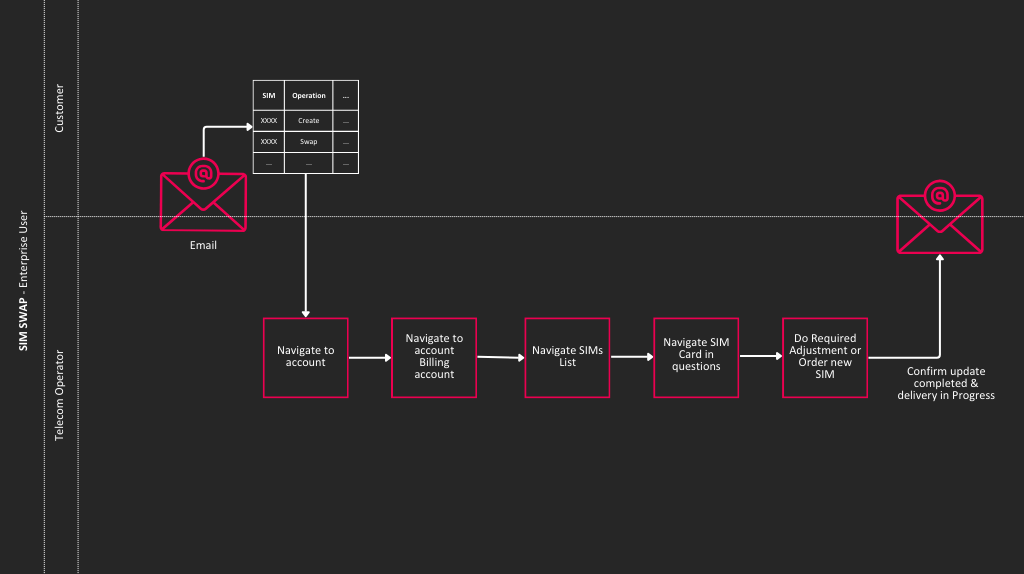
SIM Swap Flow diagram – example
Reasons for SIM Swap will vary depending on the requirements and applications for the SIM card. Various scenarios may prompt swapping, particularly in enterprises with a significant influx of transactions, incidents, or requests, here are a few:
- Assign a new SIM card to a recently created customer account.
- Replace lost SIM cards by reallocating and assigning replacements.
- An organization is swapping the SIM card because a new employee will be using it instead of the current user.
- Swapping because there’s an issue with the SIM card.
Criteria for SIM Swaps Eligible for Unattended Robot Automation
Specific conditions determine the suitability of processes (in this case SIM swaps) for the effective application of unattended robots.
- Processes
- The process must be straightforward and user-friendly, requiring only a few clicks on the system. It doesn’t demand a high level of user intelligence.
- Each step takes time due to specific steps that must be followed.
- There’s a set pace, resembling a service level agreement (SLA), ensuring a consistent and predictable process.
- Timing
Timing is crucial because you are dealing with enterprise-level volume – any delays might cause a problem. While several resources may be allocated there can be fluctuations – perhaps the volume increased or reduced at some point resulting in resources redundant or missing resources. - Voluminous
Elevated transaction volumes managed by humans may lead to quality errors, posing challenges to achieving business excellence. - Repetitive Actions
The process involves manual repetitive actions to be carried out by the user for example:- accessing the system,
- check the account for example the Prodigy accounts,
- verify that the account has those specific numbers, in the same order
- identify the number that has the issue,
- click the number and choose
- click on SIM swap
- opening another form
- identify the new serial that you want to assign
- when making the assignment, you need to confirm the reason behind it and what’s the date of delivery
- confirm whether there is a special company logo or icon that needs to be included
- request the SIM card size – is it micro, mini and so on. Essentially the above list forms the steps that an agent completes using forms and clicks. This is the quality, the process – the problem we want to solve using RPA and an unattended robot.
Instructing the Unattended Robot
All the previous steps are initiated by some form of request – it might be via a call to the contact centre or an e-mail request. Because there is a record, data can be exported from the system via a spreadsheet. The spreadsheet will contain the responses to all the form questions which the user would have entered manually. This data (.csv) can in turn be pushed regularly via e-mail to a mailbox – i.e. to the robot.
The robot handles it from here. After the actions are completed by the robot, two things happen right away: a spreadsheet gets updated with the latest info, and a screen shows if the task is finished. It tells us if there’s a problem, like strange data or the system freezing. This screen gives us all the details about what happened.
As an example, in the telecoms industry, Vodafone employs Salesforce for this action, but it applies to other providers like Oracle, Dynamics, Zoho, ERPNext, eGain and more. Find out more about How we train robots
Maximizing Efficiency: The Advantages of Embracing Robotics
By using automation, like unattended robots, for tasks that are straightforward and don’t need human smarts, we save human resources. This means people can spend their time on more interesting and important jobs instead of doing repetitive tasks that are basically copying what robots can do. Your business can achieve advantages in accuracy, scalability and cost-effectiveness.
Accuracy is paramount. Once you’ve defined your process, it remains unchanged unless you request a modification. This ensures consistency and quality.
Scalability is another advantage of unattended robots. They work in the background, executing tasks on servers without the need for a dedicated device. If you have 10 transactions today but 1000 tomorrow, you don’t need to prepare ahead. Robots can dynamically scale by running multiple instances with the same process and instructions.
Cost and pricing models are based on consumption. Unattended robots can work on a ‘pay-as-you-go’ – per transaction model. If you run 10 transactions, you pay for 10. The scalability of unattended robots ensures meeting extra requirements within agreed parameters, providing a flexible and cost-effective solution.
So, in summary, embracing unattended robots can be game-changing at enterprise-level operations. They bring enhanced efficiency, flawless accuracy, and impressive scalability to repetitive mundane tasks. By integrating them into workflows, organizations not only streamline processes such as the above example of SIM swap processes but also free up human resources for more impactful tasks. With a flexible pay-as-you-go model, unattended robots offer a cost-effective solution, aligning seamlessly with enterprise needs.
Are you ready to supercharge your operations with the transformative power of unattended robots? Reach out to the Prodigy RPA team today, and let’s make your business processes smarter, faster, and more efficient! Discover our 6 step RPA Implementation process
Reach out to our consultants
Embrace the future of finance and accounting with Prodigy’s OCR and RPA integration on Salesforce. Unlock the full potential of automation to streamline your operations, reduce costs, and empower your teams. Transform your finance department into an efficient, error-free powerhouse that drives business growth and success.
Contact Prodigy to learn more about our OCR and RPA solutions for Salesforce:






